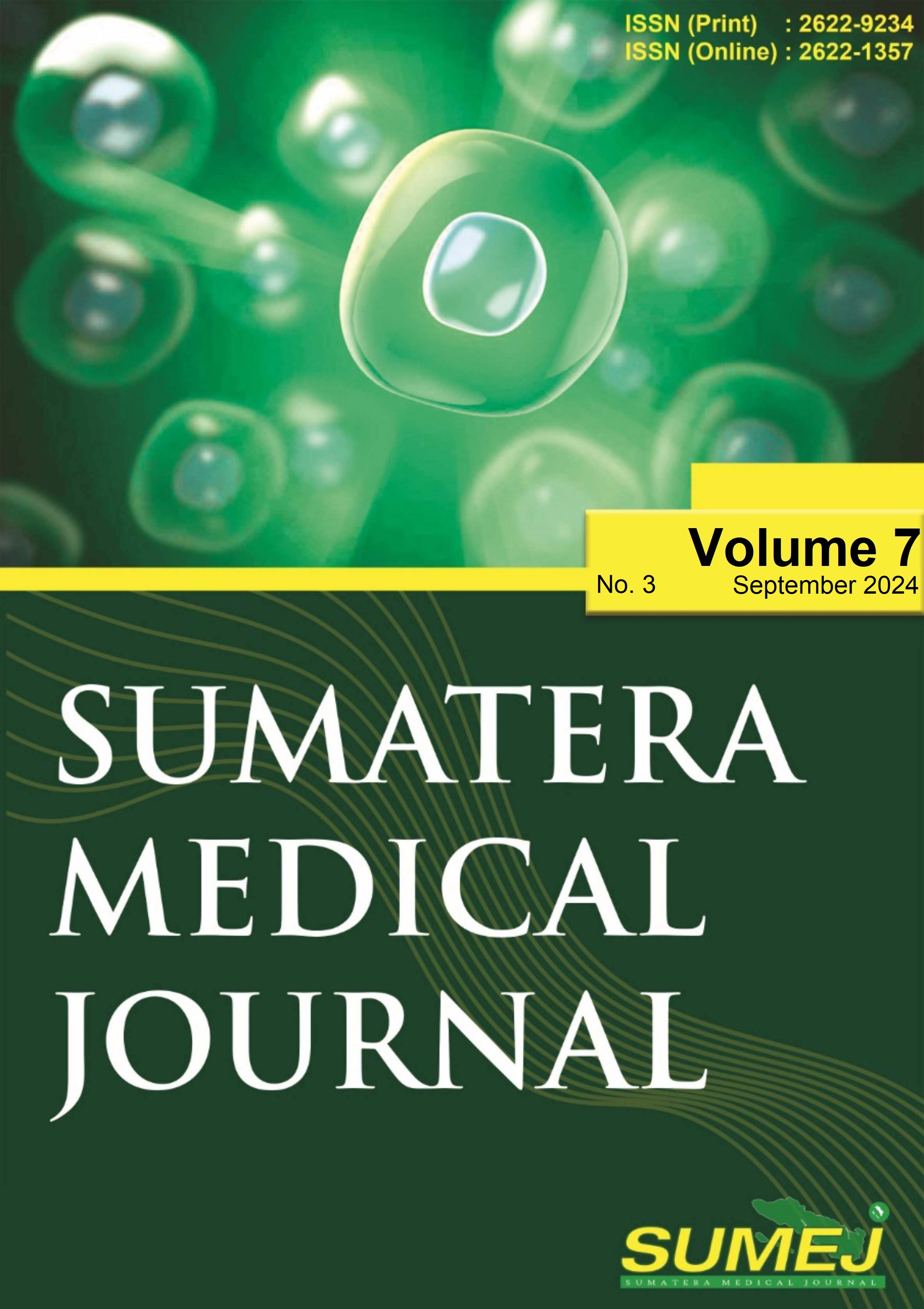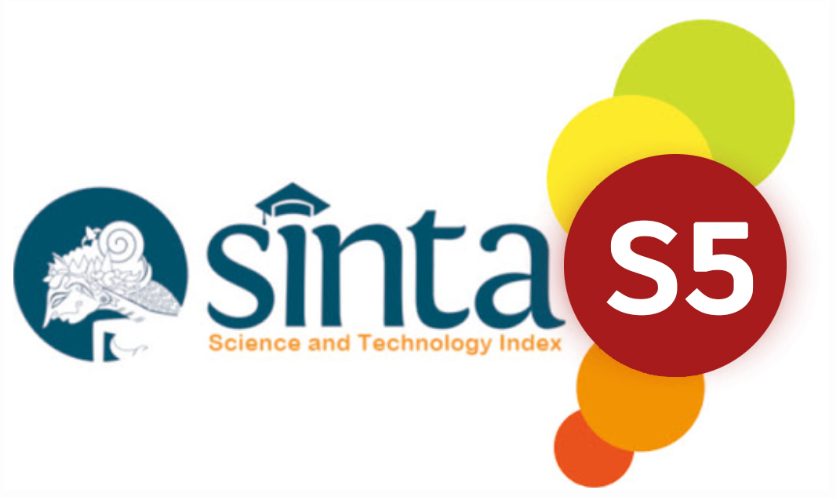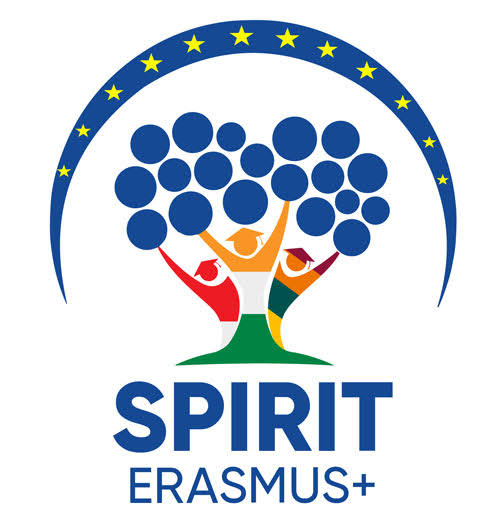Parents Education is One of Affected Factor in Stunted Children Profile in Pekanbaru
DOI:
https://doi.org/10.32734/sumej.v7i3.15513Keywords:
education level, family income, family planning, national health insurance, stuntingAbstract
Background: Stunting is a developmental disorder in children caused by poor nutrition, recurrent infections, and inadequate psychosocial stimulation, marked by the child's height or length being below the threshold (Z-Score) of -2 standard deviations. Objective: The aim of this study was to explore prevalence of stunting in Pekanbaru. Methods: This was descriptive research with quantitative data, and the sample size was 75. Results: The family profile of those with stunted children included fathers with mostly secondary education (64%), mothers with secondary education (57.3%), 19 mothers experiencing short stature (CED), with only four mothers receiving additional food, mothers who took iron supplements during pregnancy (80%), children with stunting who were exclusively breastfed (78.7%) and introduced to complementary feeding (80%), children with stunting taken to integrated health posts for regular growth and development monitoring (76%), children with stunting receiving complete immunization (57.3%), families participating in family planning programs (60%), and children with stunting resulting from unwanted pregnancies (40%). Conclusion: The majority of parents with stunted children had a lower to middle education level, low income, did not participate in the national health insurance program (JKN), and did not receive either cash or food assistance.
Downloads
References
World Health Organization. Stunting in a nutshell [Internet]. Geneva: WHO; 2015 [cited 2023 Jul 19]. Available from: https://www.who.int/news/item/19-11-2015-stunting-in-a-nutshell
World Health Organization. Reducing stunting in children: equity considerations for achieving the Global Nutrition Targets 2025. Geneva: World Health Organization; 2018.
Kementerian Kesehatan Republik Indonesia. Hasil Riset Kesehatan Dasar Tahun 2018. Jakarta: Kementerian Kesehatan RI; 2018.
Kementerian Kesehatan Republik Indonesia. Laporan Pelaksanaan Integrasi Susenas Maret 2019 dan SSGBI Tahun 2019 [Internet]. Jakarta: Badan Pusat Statistik; 2019 [cited 2023 Jul 19]. Available from: https://stunting.go.id/?smd_process_download=1&download_id=5219
World Health Organization. Childhood stunting: challenges and opportunities. Report of a Promoting Healthy Growth and Preventing Childhood Stunting Colloquium. Geneva: WHO; 2014.
Jannah F. Hubungan tingkat pendidikan dan pengetahuan orang tua terhadap kejadian stunting pada balita di Puskesmas Kebayoran Baru Kota Jakarta Selatan [thesis]. Jakarta: Universitas Islam Negeri Syarif Hidayatullah; 2022.
Tello B, Armijos RX, Zambrano E, Palacios A, Bendezú M, Betancourt M, et al. Breastfeeding, feeding practices and stunting in indigenous Ecuadorians under 2 years of age. Int Breastfeed J. 2022;17(1):1-11.
Republik Indonesia. Undang-Undang Nomor 20 Tahun 2003 tentang Sistem Pendidikan Nasional. Jakarta: RI; 2003.
Leroy JL, Habicht JP, de Cossío TG, Ruel MT. Maternal education mitigates the negative effects of higher income on the double burden of child stunting and maternal overweight in rural Mexico. J Nutr. 2014;144(5):765-770.
Fauziah FU. Hubungan faktor sosial ekonomi dengan kejadian stunting [thesis]. Semarang: Fakultas Kedokteran Universitas Islam Sultan Agung; 2022.
Lestari W, Samidah I, Diniarti F. Hubungan pendapatan orang tua dengan kejadian stunting di Dinas Kesehatan Kota Lubuklinggau. J Pendidikan Tambusai. 2022;6(1):3273-3279.
Spencer RA, Komro KA. Family economic security policies and child and family health. Clin Child Fam Psychol Rev. 2017;20(1):45-63.
Rufaida FD, Rahargjo A, Handoko A. Hubungan faktor keluarga dan rumah tangga dengan kejadian stunting pada balita di tiga desa wilayah kerja Puskesmas Sumberbaru Jember. J Agromed Med Sci. 2020;6(1):1-7.
Putriyanti CE, Putri RA, Wijayanti R. Kejadian stunting berhubungan dengan faktor ekonomi. J Ilm Permas STIKES Kendal. 2021;11(2):1-8.
Qoyyimah AU, Wintoro PD, Hartati L, Chasanah M. Hubungan riwayat ibu hamil kekurangan energi kronis dengan kejadian stunting pada balita usia 3-5 tahun di Puskesmas Jatinom Klaten. Prosiding Seminar Nasional Unimus. 2021;4:1-7.
Khotimah AM. Hubungan kekurangan energi kronik (KEK) pada ibu hamil dengan kejadian stunting di wilayah kerja Puskesmas Sibela Surakarta [thesis]. Surakarta: Universitas Sebelas Maret; 2022.
Aprilianti A. Pengaruh pemberian makanan tambahan (PMT) terhadap kenaikan berat badan pada ibu hamil kekurangan energi kronik (KEK) di Indonesia [thesis]. Bengkulu: Politeknik Kesehatan Republik Indonesia; 2022.
Juliasari F, Ana E. Pemberian makanan tambahan (PMT) dengan kenaikan berat badan ibu hamil KEK. J Maternitas Aisyah (JAMAN AISYAH). 2020;1–5.
Sabatina Bingan EC. Hubungan konsumsi Fe dengan panjang badan pada anak usia 12–24 bulan. Media Informasi. 2020;15(2):115–20. Available from: https://doi.org/10.37160/bmi.v15i2.415.
Nurhayati, Halimatusakdiyah, Asniah. Pengaruh asupan tablet zat besi (Fe) terhadap kadar hemoglobin (Hb) pada ibu hamil di Puskesmas Kopelma Darussalam tahun 2014. Idea Nurs J. 2014;6(3):76–82.
Jurnal Epidemiologi Kesehatan Indonesia, Susanti E, Maharani A, Ramadhani S. Impact of exclusive breastfeeding on stunting among child aged 6–59 months in Kabupaten Bogor at 2019. J Epidemiol Kesehatan Indones. 2019;3(2):1–6.
Sampe AS, Toban RC, Madi MA. Hubungan pemberian ASI eksklusif dengan kejadian stunting pada balita. J Ilm Kesehatan Sandi Husada. 2020;11(1):448–55. Available from: https://doi.org/10.35816/jiskh.v10i2.314.
Rayhana, Amalia CN. Pengaruh pemberian ASI, imunisasi, MP-ASI, penyakit ibu dan anak terhadap kejadian stunting pada balita. Mutiara Journal of Nursing Faculty. 2021;1(2):54–9. Available from: https://doi.org/10.24853/mjnf.1.2.54-59.
Sembiring TdrH. ASI eksklusif. Jakarta: Kementerian Kesehatan Republik Indonesia.
Pratama MR, Irwandi S. Hubungan pemberian ASI eksklusif dengan stunting di Puskesmas Hinai Kiri, Kecamatan Secanggang, Kabupaten Langkat. J Kedokteran STM. 2021;4(1):17–25. Available from: https://doi.org/10.30743/stm.v4i1.65.
WHO Guidelines Review Committee. WHO guideline for complementary feeding of infants and young children 6–23 months of age. Geneva: World Health Organization; 2023.
Sukaningtyas NMY. Hubungan frekuensi kehadiran ke posyandu dengan kejadian stunting pada balita usia 24–59 bulan [thesis]. Denpasar: Politeknik Kesehatan Kemenkes Denpasar; 2021.
Hera AGM, Simanjorang C, Angelina G, Fitriani MA, Wasir R. Efektivitas Posyandu dalam penanganan dan pencegahan stunting. J Kesehatan Masyarakat. 2023;7(1).
Wanda YD, Elba F, Susanti AI, Rinawan FR. Riwayat status imunisasi dasar berhubungan dengan kejadian balita stunting. J Kebidanan Malahayati. 2021;7(4):851–6. Available from: http://ejurnalmalahayati.ac.id/index.php/kebidanan.
Rahmidini A. Gambaran partisipasi KB pada ibu yang memiliki balita stunting di Desa Cikunir Kecamatan Singaparna tahun 2019. J Bidkesmas Respati. 2021;2:1–6.
Khumairoh DF, Doko MM, Malau CNB. Peran program keluarga berencana terhadap prevalensi stunting di Indonesia. J Ilmu Sosial, Pendidikan dan Humaniora. 2023;2(1):1–7.
Herbawani CK, Karima UQ, Syah MNH, Hidayati AN, Aprianto B. Analisis determinan kejadian stunting di wilayah kerja Puskesmas Cinangka, Kota Depok. Ghidza: Jurnal Gizi dan Kesehatan. 2022;6(1):64–79. Available from: https://doi.org/10.22487/ghidza.v6i1.518.
Pertiwi FD, Prastia TN, Nasution A. Hubungan faktor sosial ekonomi dan riwayat pemberian ASI eksklusif dengan kejadian stunting pada balita. J Ilmu Kesehatan Masyarakat. 2021;10(4):208–16. Available from: https://doi.org/10.33221/jikm.v10i04.801.
Yogaswara D, Suparman S, Widayati W, Wahyuni W. Jaminan kesehatan dan pendapatan keluarga balita stunting di Desa Sukamulya Kecamatan Singaparna Kabupaten Tasikmalaya tahun 2021. Afiasi: J Kesehatan Masyarakat. 2021;6(3):179–85.
Annisaulkhairi A, Nurdin NM. Kualitas pangan rumah tangga dan status gizi balita Program Keluarga Harapan (PKH) di Kecamatan Harau, Kabupaten Limapuluh Kota. J Ilmu Gizi dan Dietetik. 2023;2(1):31–6. Available from: https://doi.org/10.25182/jigd.2023.2.1.31-36.
Novalianita P, Handayani D. Analisis pengaruh bantuan program sembako terhadap prevalensi stunting di Indonesia. J Manajemen Bisnis dan Keuangan. 2023;4(1):32–42. Available from: https://doi.org/10.51805/jmbk.v4i1.101.
Downloads
Published
How to Cite
Issue
Section
License
Copyright (c) 2024 Sumatera Medical Journal

This work is licensed under a Creative Commons Attribution-ShareAlike 4.0 International License.
The Authors submitting a manuscript do so on the understanding that if accepted for publication, copyright of the article shall be assigned to Sumatera Medical Journal (SUMEJ) and Faculty of Medicine as well as TALENTA Publisher Universitas Sumatera Utara as publisher of the journal.
Copyright encompasses exclusive rights to reproduce and deliver the article in all form and media. The reproduction of any part of this journal, its storage in databases and its transmission by any form or media, will be allowed only with a written permission from Sumatera Medical Journal (SUMEJ).
The Copyright Transfer Form can be downloaded here.
The copyright form should be signed originally and sent to the Editorial Office in the form of original mail or scanned document.











